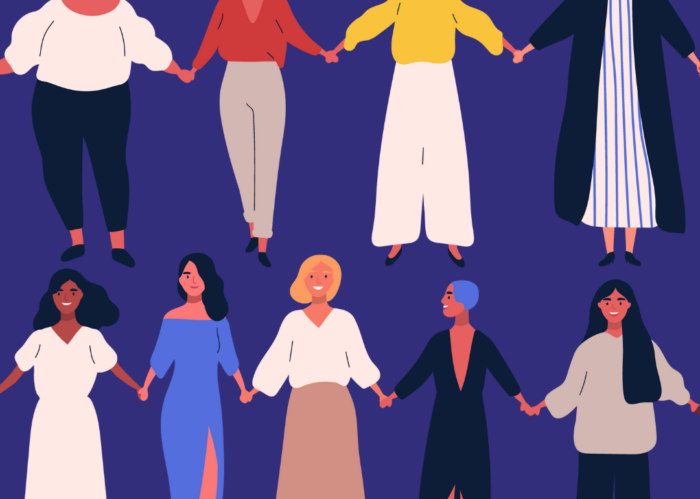The New Yorker librarians: Erin Overbey interviews Jon Michaud about When Tito Loved Clara

Jon Michaud’s When Tito Loved Clara follows the story of Clara, a Dominican-American wife and mother, as she aspires to a middle-class suburban existence only to be drawn back to her community and culture by an old love. Jon articulates for a new generation what it means to come from two different worlds, and the price exacted when we turn away from our own past. His characters live on the boundaries of regret and aspiration, of yearning and discontent. In the words of the author Lauren Grodstein, Jon’s novel “is a joy, a treasure, and a triumph.” As Jon’s colleague at The New Yorker for the past seven years, I’ve had both the pleasure of working beside someone who has become a good friend and the rare privilege of observing the inception of this rich, multi-layered novel. Jon and I sat down recently to chat about his experiences as a début novelist and as The New Yorker’s head archivist.
Erin Overbey: Aside from the Mercedes and the G5, any plans to go a little crazy with your newfound success?
Jon Michaud: I’m having a yacht built. When it’s done, Charlie Sheen and I are going to sail around the world together.
Ah, Cheever might feel a bit left out. You’ve been the head librarian at The New Yorker for about seven years now, and before that you were a librarian at Time and at the EPA. Several of the main characters in your novel are also librarians. Can you talk about how being an archivist, particularly at a magazine like this one, has influenced your approach to writing fiction?
My professional life directly influenced the novel by providing two of the three main characters with their occupations—Clara and Thomas are both librarians. (Among the most crucial building blocks for a fictional character in my mind are name and occupation.) For Clara, librarianship—the graduate degree and the white-collar status that accompanies it—represents the final stage in her assimilation. And, as a number of reviewers have noted, the quiet order of the library is in stark contrast to the lives of her rambunctious, chaotic Dominican family.
While Clara works as a traditional reference librarian in a Newark law firm, Thomas is employed at the forefront of the digital revolution, working for a company that digitizes corporate and scholarly archives. For details about his job, I drew on the experience that you and I went through several years ago when The New Yorker digitized its archive, first for The Complete New Yorker book and DVD set and, later, for the digital archive on NewYorker.com. The watershed moment in library and information science we’re witnessing now seemed a worthy subject for a novel. There was a lot more of this material in the first draft of the book, but a fair amount of it got weeded out as the story developed and it became more Clara’s and Tito’s than Thomas’s.
One side note: the idea of going into someone’s house to catalog a private library was inspired by a friend who, for a time, had such a job. His stories about the voyeuristic nature of that job were irresistible to me and also informed the casual snooping that Tito enjoys in his job as a mover.
You mentioned the New Yorker digital scanning project….
Yes, that was a remarkable thing to be a part of, wasn’t it? More than a million index cards and four thousand issues of The New Yorker scanned and turned into a searchable database and archive.
Did you discover any “new” New Yorker writers during that project? I felt like I rediscovered the humorist Frank Sullivan, whose work is now out of print, I believe.
I discovered the work of John Collier, an English writer who published macabre and funny stories in the magazine in the nineteen-forties and fifties. And although it wasn’t a “discovery,” I must say that I also felt a renewed sense of awe at the scale and range of E. B. White’s contributions to the magazine over the decades, the sheer magnitude of which I hadn’t fully appreciated before the digital conversion.
You wrote much of this novel on the NJ Transit commuter train from Manhattan to Maplewood, NJ, where you and your family live. How did that work exactly?
I wrote the second half of the book and did almost all of my revisions on Midtown Direct trains between South Orange and Penn Station (and, in fact, I am writing this answer on one of those trains). Necessity being the mother of invention, I turned to my commute as a last refuge for writing after my wife and I had our second child in 2008 and the golden hour I’d had each night between ten and eleven at night evaporated. Working in two forty-minute bursts, one in the morning and one in the evening, is not the ideal way to write a novel, but it does have the advantage of keeping the book fresh in your head. I often found that a scene which had been giving me trouble in the morning was sorted out by my subconscious during the day so that I could finish writing it during the evening commute.
The novel raises a lot of intriguing questions about the immigrant experience, especially the costs of assimilation. You seem to have moved around quite a bit when you were growing up, living in such far flung places as Iran, India, Northern Ireland, and Paris. Do you feel that your background has given you more awareness of the particular problems many immigrants face?
I do think that my itinerant childhood and youth have contributed significantly to my fiction writing. My father was in the Foreign Service, so we were “visitors” rather than immigrants in all of those places, but the recurring sense of not being a native-born member of the culture in which we were living made a big impression on me and has certainly driven my interests in the immigrant experience.
Additionally, almost everyone who comes to New York with professional or artistic ambitions—as I did in the early nineties—goes through a process not unlike immigration. The city gives you the cold shoulder at first and you have to be tenacious and little bit wily to make your way here. The novel looks at both kinds of “immigrant” story and includes characters who prosper here and some who don’t.
Being a librarian is all about cataloguing and maintaining ties to the past and yet the immigrant’s journey toward assimilation often involves rejecting one’s past or culture. Can you expand a bit on how the past is seen in the novel as both something to embrace and, at times, reject?
A friend of mine who emigrated from Singapore to England many years ago said that the only part of his culture he retained was the food. At the same time, I know many people who have lived in the United States for decades without ever fully assimilating. They live in neighborhoods where their native language is spoken, read imported newspapers, watch satellite television, and frequent local stores that provide them with goods from their country of origin. It is partly a generational transition and partly an individual one and the book explores the full range of possibilities. For Clara, assimilating is the mission, though, at the end of the book, she realizes how bittersweet it can be. Then there is Clara’s father who has no interest in becoming American and who won’t even allow English-language television to be watched in his house. Tito, on the other hand, is trapped between the two words, unsure of where he belongs, but full of longing. Who’s to say which is the right way to go about it? For a writer, it’s interesting because it generates conflict and the conflicts result in stories.
Your wife, Zoraida, who is also a librarian, is Dominican-American, and an obvious inspiration for the character of Clara. In an interview with the novelist Caroline Leavitt last year, you said that you were interested in exploring “how Americans are assimilating to immigrant cultures.” What was it like coming from a middle-class suburban background and being thrown into this very vibrant Dominican family?
My wife was indeed the inspiration for Clara; likewise, Thomas began as an autobiographical character, but they only became interesting to me when they started separating themselves from their points of origin and developing their own characteristics. (I am a lousy memoirist and personal essayist: I need the liberty that fiction gives you to change the inconvenient facts of life.)
Moving to Inwood and living among the Dominicans and getting to know the neighborhood and meeting my wife’s family and listening to their stories over a period of months and years resulted in a kind of stretched-out “Eureka!” moment. I had the continuous sixth-sense feeling that all of this could somehow be combined into a work of fiction: in short, that I’d found the setting and the subjects I didn’t even know I’d been looking for. But, as with the characters of Thomas and Clara, it was necessary to take fictional liberties: I altered the geography of Inwood Hill Park. I synthesized characters. I took real events and monkeyed with them. I could never be a reporter and write a book like Adrian Nicole LeBlanc’s amazing “Random Family.”
I did feel that on a personal level I was facing a question that the U.S. has been debating on a national level for some time: is our country’s identity fluid and evolving, or is it constant and unchanging? My experience has been that the former is true.
All of the characters in your novel are so well defined, but the one I find myself most drawn to is Tito. Like many immigrants, he seems to be searching for some kind of foothold in the American Dream, and his love for Clara appears to both reflect and affirm this. How did you develop this character?
This novel grew out of an unpublished book of linked short stories called “Inwood.” Tito came from an unfinished story that I’d hoped would be included in that collection. In the story, he was sitting in a car outside a woman’s house in New Jersey. I had no idea why he was there or who the woman was, but I had the sense that his life was about to change. Unable to decide exactly how his life was going to change, I set the story aside. A year or two later, when I was just beginning to work on the novel, I remembered him and realized that his quest, which begins outside that house in suburban New Jersey, would drive the book I was writing. He is a completely fictional character, with no model. And partly as a result of that, he’s also my favorite character in the book.
You’ve said that two of your favorite novelists are Junot Diaz and Edward P. Jones, both writers who explore the ramifications of what it means to be an outsider. Who are some of the other novelists who have inspired you and which books especially influenced you as you were writing this novel?
I first started writing When Tito Loved Clara in 2005, just after my wife and I had moved from Inwood to New Jersey and I had the sense that there was a sliver of the Garden State where I could set up shop—a little precinct bordered by Richard Ford’s Haddam, Philip Roth’s Newark, and Junot Diaz’s Parlin/Edison/New Brunswick. (I’d also now include the Bergen County of Lauren Grodstein’s A Friend of the Family.)
Once I started writing, I found great guidance and companionship in George Pelecanos’ Drama City, Zadie Smith’s On Beauty, Tom Perotta’s Little Children, and Edith Wharton’s The Age of Innocence. I think those influences are probably visible in the book, but I hope I have succeeded in combining them into my own fictional terrain.
-
Overall Score
Reader Rating: 0 Votes




As someone who works and lives in a community that is 85 percent not my childhood culture, I cannot tell you how wonderful this novel is in exploring the questions of fitting in for a people and for individuals.
Jon, thank you for these heartfelt explorations and for such wonderful characters. Erin, thank you for questions that go to the heart of the novel.
I saw your book on one of Oprah’s list of books to read. Is there any plans to print a paperback version of “When Tito Loved Clara”?